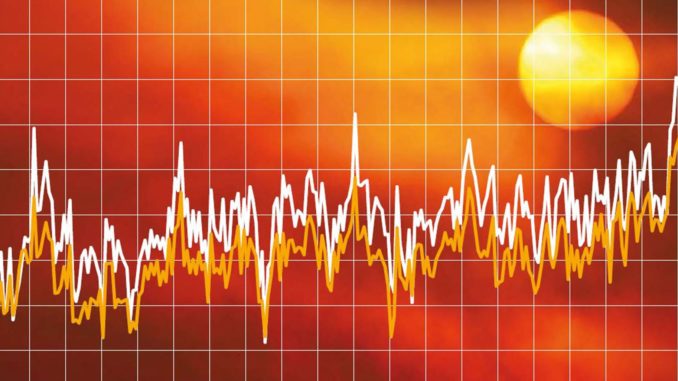
The Climate of India comprises a wide range of weather conditions across a vast geographic scale and varied topography, making generalisations difficult. The country’s meteorological department follows the international standard of four climatological seasons with some local adjustments: winter (December, January and February), summer (March, April and May),a monsoon rainy season (June to September), and a post-monsoon period (October to November).We are experiencing a dry and hot period of six months rather than the current four. Conversely, the region’s winter will shorten from four months to two. Though the Tropic of Cancer – the boundary between the tropics and subtropics—passes through the middle of India, the bulk of the country can be regarded as climatically tropical.
We are experiencing a dry and hot period of six months rather than the current four. Conversely, the region’s winter will shorten from four months to two.
One of the main causes of these changes is the growing concentration of greenhouse gases emitted into the atmosphere as a result of human activity. These projected changes will significantly influence our lives by shrinking and degrading the quality of our water resources, increasing the risk of brushfires, worsening pollution and altering the timing and intensity of seasonal illnesses and other health hazards.
The earth’s average temperature today is more than one degree hotter than pre-industrial levels and while the change appears marginal, the effect it has is catastrophic. Global efforts are focused on not letting the temperature breach the 2°C threshold – a relatively safe level beyond which climate change effects such as droughts, floods and heatwaves are likely to become more severe and irreversible. Mass densification and vertical growth in the absence of proper environmental and planning safeguards could also be contributing to the possible urban heat island effect in the city.
The rise in mercury can be directly attributed to climate change. There are numerous other anthropological factors that are increasing the intensity of high temperatures. These include lack of green spaces, exponential rise in concrete surfaces and poor ventilation in houses and buildings.
On the local level, we can make sure there’s a proper warning system, timely advice to modify or restrict activities and cooling centres to provide relief to those hit by heat. To mitigate the effect in the long term, there’s a need for greater vegetation cover, vertical growth to correspond to the required environmental and planning provisions, transition to renewable sources of energy and promotion of public transport.
By- Dr. Bhawana Asnani.
Happy to see Reviews, Additions, Suggestions and Comments, further.

Leave a Reply
You must be logged in to post a comment.